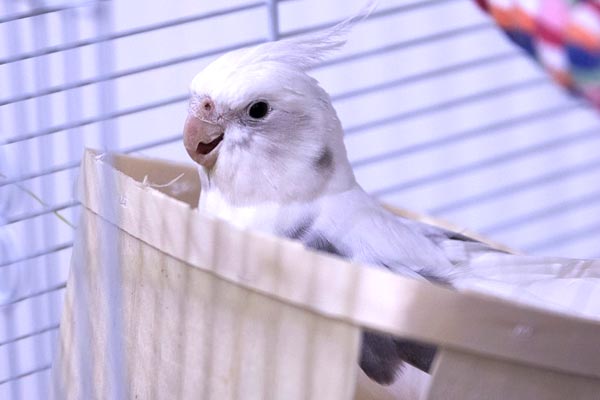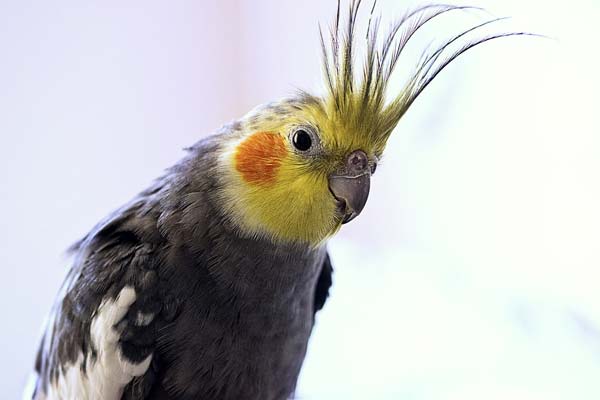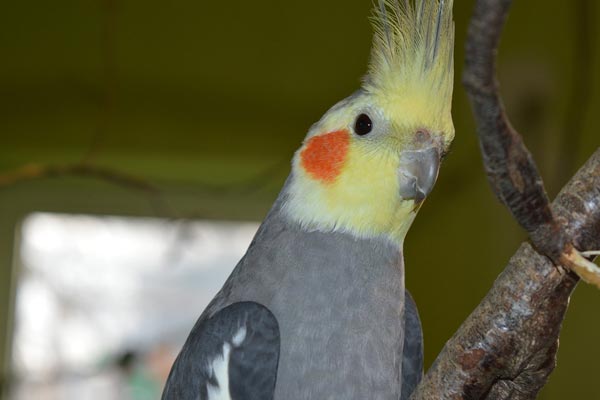How Do Eagles Sleep: Understanding the Sleeping Habits of These Majestic Birds
Eagles are majestic birds of prey known for their impressive hunting skills and sharp eyesight. They are also known for their unique sleeping habits. Understanding how eagles sleep is vital for researchers and bird enthusiasts alike, as it sheds light on the behavior and biology of these magnificent creatures.
Eagles are diurnal birds, which means they are active during the day and sleep at night. They typically sleep perched on a high tree branch or rocky ledge, using one leg to grip tightly while tucking the other leg into their feathers.
They often sleep with their heads tucked back and their eyes closed. Eagles have a particular leg tendon that allows them to lock their claws, ensuring a secure perch while resting.
When Are Eagles Most Active? When Do Eagles Hunt?
Eagles are diurnal predators, which means they are active during the day and sleep at night. They are known for their swift flight and hunting abilities, which make them one of the most successful predators in the animal kingdom. Eagles hunt for various prey, including mammals, birds, raptors, and reptiles.
Eagles are most active during the early morning and throughout the day. They wake up hungry and begin their daily hunt for food. They typically hunt in the morning and late afternoon, although they may hunt at any time during the day if hungry. Eagles are known for their exceptional eyesight, which enables them to spot prey from a great distance.
Eagles’ activity levels are closely related to their sleeping patterns. After a long day of hunting, eagles need to rest and recover. They typically sleep at night, although they may take short naps during the day. Eagles sleep in trees or on cliffs, where they are safe from predators.
Do Eagles Sleep With Their Eyes Open?
Eagles are known for keen eyesight and often scan the skies and landscapes for prey. Given their impressive visual abilities, it’s natural to wonder if eagles sleep with their eyes open.
Research has shown that some animals, including birds, can sleep with one eye open, a phenomenon known as unihemispheric sleep. This allows them to remain alert to potential threats while still getting some rest. However, it needs to be clarified whether eagles are capable of this type of sleep.
During sleep, eagles typically perch on high tree branches or rocky ledges, griping one leg tightly while tucking the other into their feathers. They often sleep with their heads tucked back and their eyes closed.
While eagles may not sleep with their eyes open, they can remain alert to potential dangers during sleep. Their brains are wired to detect changes in their surroundings, so they can quickly wake up and respond to threats even when asleep.
It’s also worth noting that eagles, like many animals, have different sleep patterns depending on the time of year and their breeding cycle. During breeding season and when incubating eggs, eagles may lie down to sleep, while at other times, they may sleep standing up.
Where Do Eagles Build Their Nests?
Eagles are known for their impressive nests, extending to depths of 13 feet and widths of 8 feet. Male and female eagles build these nests, which have been used for many years.
Eagles prefer to build their nests in tall trees near a body of water, such as a river or lake. They choose strong enough trees to support their large nests and provide a good vantage point for hunting and keeping an eye on their territory.
However, when tall trees are unavailable, eagles build their nests on the ground, cliffsides, or manufactured structures such as power poles. In Alaska and Canada, ground nests are more common, while in other areas, eagles may build their nests on rocky outcroppings or even on the ground in open areas.
The location of an eagle’s nest is essential not only for nesting and raising young but also for roosting and sleeping. Eagles sleep standing up, perched on a tree branch or other sturdy object. They safeguard themselves from the elements and maintain warmth by tucking their heads into their feathers.
Eagles are known to be very territorial and will defend their nesting and roosting sites fiercely. They often return to the same nesting site year after year, adding sticks and other materials to the nest to reinforce it and make it more comfortable.
Do Eagles Sleep in Their Nests at Night?
Eagles are known for their great sleeping habits. They have unique sleeping patterns adapted to their environment and lifestyle, such as taking short naps daily instead of long, uninterrupted sleep at night. But do eagles sleep in their nests at night?
Eagles sleep in their nests at night, especially during the breeding season. The adult eagles can sleep in the nest or on a branch within a nearby tree. They possess a specialized foot mechanism to secure their grip, enabling them to sleep without actively controlling it. This mechanism is akin to how a horse sleeps while standing.
Throughout the incubation period, both parents typically sleep in the nest. However, once the female has laid the eggs, she spends more time incubating them while the male focuses on bringing food to the nest. As the eaglets grow, the parents gradually provide them with more space. One parent may sleep nearby to protect the eaglets while the other ventures out to find food.
It is also worth noting that eagles can sleep standing on a tree branch, but this happens more when two eagles start laying eggs. Both parents spend more time in the nest as the eggs incubate. After the eggs incubate, one parent could stay with the young eaglets to guard them while the other seeks food.
How Many Hours Do Eagles Sleep?
Eagles are known for their impressive hunting skills and majestic appearance. But have you ever wondered how much they sleep? Despite being diurnal creatures, eagles must rest to conserve energy and stay healthy.
Average Sleep Duration of Eagles per Day
On average, eagles sleep for about 12 hours a day. However, this can vary depending on age, physical condition, and breeding season. Juvenile eagles and older eagles tend to sleep more than healthy adults. During the breeding season, eagles may sleep less to focus on caring for their young.
Comparison of Sleep Patterns Between Different Eagle Species
Eagle species exhibit distinct sleep patterns. The African fish eagle, for instance, tends to sleep for shorter intervals during the day and longer durations at night. Conversely, the golden eagle adopts longer periods of sleep during the day and shorter periods at night.
Factors Influencing Variations in Sleep Duration
Several factors can influence the amount of sleep an eagle gets. For example, eagles living in areas with fewer predators may sleep longer than those with more predators. Additionally, eagles that have recently caught prey may sleep less to protect their food from other animals.
Do Eagles Sleep Standing Up?
Most eagles are diurnal, which means they are active during the day and sleep at night. Eagles can sleep while standing up, which is made possible by their strong talons and leg muscles. They can also sleep while perched on a tree branch or rocky cliff, using their wings to maintain balance.
Eagles possess a unique foot mechanism that enables them to secure their position while sleeping, similar to how a horse sleeps standing up. Eagles can maintain their stance by locking their feet around a branch or support and flexing their tendons, conserving energy and safeguarding against predators.
While standing, eagles tuck their heads into their feathers for warmth at night. They can also sleep perched on a tree branch or rocky cliff, utilizing their wings to maintain balance. Throughout the breeding season, adult eagles choose to sleep either at the nest or on a branch within the nest tree or a nearby tree.
Compared to other sleep positions, standing sleep is a unique posture that is only used by a few animals, including horses and some birds.
Eagles use this posture to protect themselves from predators while still being able to rest. Overall, the ability of eagles to sleep standing up is a fascinating adaptation that allows them to survive and thrive in their environment.
Do Eagles Sleep in the Same Place Every Night?
Eagles prefer consistent sleeping locations and often roost in the same place every night. Safety, comfort, and accessibility influence their choice of sleeping spots.
Eagles tend to roost in trees or on tree branches, providing a secure and elevated location for sleeping. They may also choose to roost near a source of food or water, as this can make it easier for them to hunt and survive.
Studies have shown that some eagles exhibit high consistency in choosing roosting sites. For example, a study of golden eagles in Scotland found that individuals tended to use the same roosting sites year after year, with some sites being used for several decades.
However, not all eagles exhibit such consistency in their roosting habits. Some may switch roosting sites regularly, depending on seasonal changes in habitat or prey availability.
Conclusion
Eagles have unique sleeping patterns adapted to their environment and lifestyle. They take short naps throughout the day and night rather than sleeping for long hours like humans.
Eagles sleep standing up, perched on a branch, with their heads tucked into their feathers for warmth. Their sleep patterns differ from ours, as they sleep in short bursts and are most active during the day when they hunt. Understanding how eagles sleep adds to our appreciation of these majestic birds.







